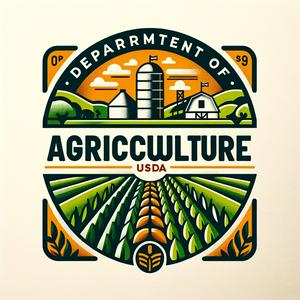USDA's Disaster Aid, SNAP Changes, and Impacts Across America
The big story out of the U.S. Department of Agriculture this week is fresh help for farmers and families at the same time: new disaster aid and emergency loans for producers hit by extreme weather, alongside firm confirmation that December SNAP benefits are going out on schedule despite federal budget drama. According to USDA announcements and farm media reports, billions in disaster relief and low‑interest “physical loss” loans are now available, while advocates like the Food Research & Action Center say states are scrambling to keep up with sweeping SNAP rule changes and new work requirements.Here’s what that means for you. For farmers and ranchers, USDA has set aside a massive pool of disaster assistance, with more than five billion dollars already paid out and over ten billion still on the table for those recovering from storms, drought, and other losses. USDA’s Farm Service Agency is also rolling out low‑interest loans in hard‑hit areas such as New York and neighboring states, giving producers a way to repair damaged buildings, replace equipment, and keep operations running while they wait for full recovery.On the nutrition side, USDA has confirmed that Supplemental Nutrition Assistance Program, or SNAP, benefits for December will follow the normal schedule, with no shutdown‑related interruption for households that rely on that monthly transfer to buy groceries. At the very same time, implementation of the One Big Beautiful Bill Act of 2025 is reshaping SNAP, tightening work requirements up to age 65, changing eligibility rules, and shifting more administrative and benefit costs to states over the next few years.Anti‑hunger groups warn that this combination of new rules and fast implementation deadlines could make it harder for some adults, including caregivers, veterans, and people with unstable work hours, to keep their benefits. They argue that state agencies need much more time, guidance, and funding to update systems without kicking eligible people off the rolls by mistake. State governments now face a double bind: comply quickly with complex new federal rules or risk higher error rates that, under the new law, can trigger state cost penalties down the road.For businesses up and down the food chain, USDA’s disaster programs and “bridge” aid payments are meant to stabilize supply and cash flow so input suppliers, processors, and local lenders are not dragged down by a wave of farm failures. At the same time, retailers and food manufacturers are watching SNAP closely, because changes in eligibility and work rules can directly affect how much low‑income customers are able to spend in their stores each month.Internationally, stronger disaster support and ongoing market reports from USDA, like the monthly World Agricultural Supply and Demand Estimates, signal to trading partners that the United States intends to keep export commitments and remain a reliable supplier, even in a year of weather extremes and political fights over spending. The push to modernize data collection for SNAP and other programs, though controversial domestically, is also part of a broader trend toward tighter monitoring of fraud and error that many countries are pursuing.Looking ahead, listeners should watch three things. First, upcoming USDA deadlines for farmers to apply for disaster relief and low‑interest loans in their counties. Second, state‑level announcements on how new SNAP work requirements and eligibility rules will roll out in practice, including any public hearings or comment periods. And third, USDA’s next market and budget updates, which will reveal whether additional “bridge” support for producers is coming before new long‑term programs start in 2026.If you want to engage, now is the time to check your state agriculture or human services website, contact your local USDA service center, or reach out to your congressional delegation about how these changes will affect your family, your business, or your community. Farmers should talk with their lenders and crop advisers about which USDA programs fit their situation, and households on SNAP should make sure their contact information and work status are up to date to avoid interruptions.Thanks for tuning in, and don’t forget to subscribe so you never miss an update on how federal food and farm policy is shaping real lives across America. This has been a quiet please production, for more check out quiet please dot ai.For more http://www.quietplease.aiGet the best deals https://amzn.to/3ODvOtaThis content was created in partnership and with the help of Artificial Intelligence AI


